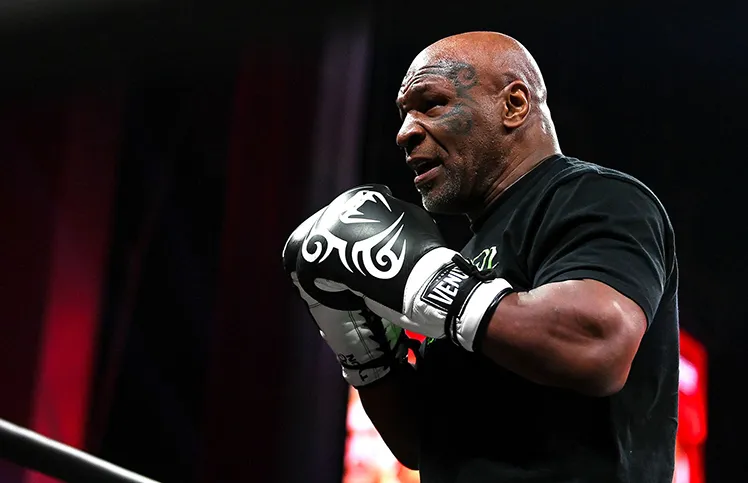
Early Professional Fights
Professional Boxing Prodigy Mike Tyson had been ready to stake his boxing career since 1985, gathering his raw power, discipline and desire to dominate. A product of the fabled Cus D’Amato, Tyson picked up the peek-a-boo model—shaking the head and hands, fighting from a defensive posture, lashing out with punishing power. Those early fights revealed they his awesome power in the ring and accuracy gained the attention as the next big thing in the heavyweight division.
In fact, in his first year as a pro, Tyson fought an astonishing 15 times, winning them all—most by first round KO. Those matches, although against unknown foes, allowed him to gain experience and make a name for himself. Fans were mesmerized at how easily he dispatched often-famed opponents, sometimes in seconds. Tyson became one of the most hyped athletes in professional sports, but as of 1985, he remained largely untested against the best heavyweight fighters.
First Title Shot and Victory
Tyson’s initial title shot occurred on November 22, 1986, as he battled WBC Heavyweight Champion Trevor Berbick. The 20-year-old Tyson, who came into the fight with a perfect record of 27-0 (with 25 KOs), was a heavy favoriteł despite his age. Fought in Las Vegas, the battle was of the heavyweight unification series which was intended to come up with an undisputed heavyweight champion.
Tyson didn’t hesitate in imposing himself on the contest. From the opening bell, he unleashed sizzling combinations that sent Berbick backpedaling. Tyson knocked Berbick down with an uppercut in the second round. The champion tried to rise but his legs failed him again — a split-second for an indelible knockout highlight in the annals of boxing. The referee called off the fight, and Tyson, only 20 years and 4 months old, was the WBC heavyweight champion.
Becoming the Youngest Heavyweight Champion
In defeating Berbick, Tyson became the youngest heavyweight champion in history (a record that remains unbroken). This wasn’t just about talent, but instead, the result of years of focused training, personal transformation, and strategic career building. In Tyson’s youth and dominating persona and perfection sent shockwaves around the world.
Shortly after this triumph, Tyson went on to unify the heavyweight crown. In 1987, he won the WBA title by outpointing James “Bonecrusher” Smith, then added the IBF belt later that year by defeating Tony Tucker. Tyson is the only heavyweight to simultaneously hold the WBA, WBC and IBF titles, and the only heavyweight to unify them in succession.
He was on fast track to stardom, but that was just the beginning of a career that would contain some of the most indelible moments in modern sports history.
Key Fights and Milestones
Mike Tyson’s ascent to the top of the boxing world was marked by a number of critical fights and memorable performances. The first one was only an appetizer: After he won the title, he didn’t decelerate — he flew through the heavyweight ranks in a way that was both destructive and unprecedented. His reign wasn’t just about wins; it was about how — decisively, dramatically and, frequently, within minutes of the start of a match — he won.
The Fight Against Trevor Berbick (1986)
The November 1986 fight with Trevor Berbick was more than just a title fight but the day Tyson publicly introduced himself to the world as a once-in-a-generation force. Not that Berbick, a well-worn veteran and WBC champ, was unfamiliar with stout opposition. He had beaten Muhammad Ali in Ali’s last fight and was perceived as a tough, rugged fighter.
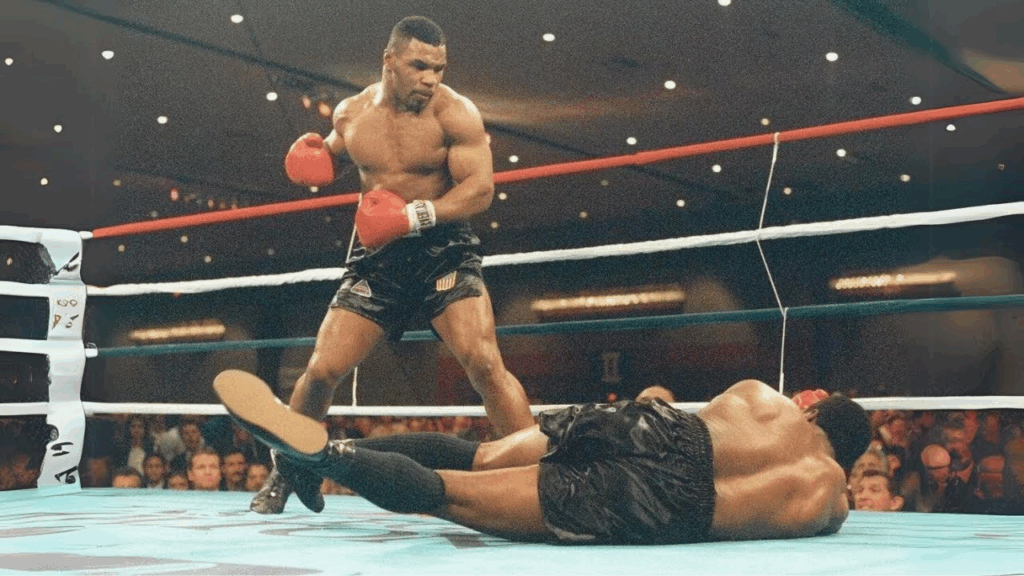
But against Tyson, Berbick seemed overmatched from the outset. Tyson’s in-and-out footwork, constant head movement, and punishing left hooks had Berbick bewildered and frustrated. In the second time, Tyson connected with his left hook to where Berbick was left stumbling across the ring. Berbick attempted to rise on three occasions, but his legs were unsteady, and the referee stopped the fight. The dramatic knockout, with Berbick staggering to his feet and back down again on more than one occasion, proved an iconic visual moment in sports history and solidified Tyson’s reputation as one of the most terrifying knockout artists of all time.
Dominating the Heavyweight Division
Following his historic victory over Trevor Berbick, Mike Tyson wasted no time pursuing total dominance of the heavyweight class. In March 1987, he took on James “Bonecrusher” Smith, the reigning WBA champion. Although Smith managed to survive the full 12 rounds, he spent much of the fight clinching to avoid Tyson’s devastating blows. Tyson controlled every round and won a unanimous decision, adding the WBA belt to his collection.

Later that same year, Tyson faced Tony Tucker, the IBF titleholder. Once again, Tyson prevailed, winning by decision and officially becoming the undisputed heavyweight champion of the world. With this victory, he achieved what very few had before:
- Unified the WBC, WBA, and IBF titles
- Became the first heavyweight to hold all three belts simultaneously
- Accomplished this by the age of 21
Tyson’s title defenses were nothing short of brutal. He overwhelmed every challenger with speed, aggression, and power. Fighters like:
- Pinklon Thomas
- Tyrell Biggs
- Tony Tubbs
—were all dispatched within three rounds, unable to withstand Tyson’s pace and precision.
By 1988, Tyson wasn’t just the unified champion—he was a global sensation. His fights became must-watch events, drawing massive pay-per-view audiences and electrifying the boxing world. Tyson’s reign during this period remains one of the most dominant in heavyweight history.
Defeating Larry Holmes (1988)
One of Tyson’s signature and most high-profile wins, over Larry Holmes on January 22, 1988. Once male and female fighters got on Twitter, they didn’t get off, and they all expressed a willingness to be a part of it, including the former champion Holmes, one of the last fighters of the Muhammad Ali period. (Holmes came out of retirement for the fight.) He was a bit past his best, as well, but Holmes was an experienced technician known for his jab and ring smarts.

But against Tyson, Holmes appeared every day of his 38 years. Tyson in his heyday stalked Holmes from the first round, and the pair never looked back. Tyson dropped Holmes three times in the fourth round, and the three-knockdown rule was in effect. It remains the only fight in Holmes’ lengthy career in which he was unable to hear the final bell, a clear proclamation from Tyson to the world of boxing.
Mike Tyson’s Impressive Streak of Knockouts
Tyson compiled one of the most daunting records in the history of the heavyweight division from 1985 to 1989. Of those first 37 fights, he won 33 of them by knockout — many of those in the first round. And his series of knockouts was remarkable not just for its ferociousness, but for its regularity. His opponents just couldn’t deal with his blend of hand speed, upper body movement and punching power.
His knockout of Michael Spinks in 1988, for instance, was over in 91 seconds. He’s an unbeaten Spink’s a former champ himself so very definately he knew his stuff. Tyson just instead made him appear to be a journeyman. That bout, fought in Atlantic City and shown worldwide, was the pinnacle of Tyson’s career and was widely considered one of the most overbearing title-fight performances in history.
The Buster Douglas Loss and Its Impact
One of the biggest upsets in boxing history happened on February 11, 1990, when the undefeated, undisputed, and feared Mike Tyson got knocked out cold by 42-to-1 underdog James “Buster” Douglas. The defeat shocked the world and represented a pivotal moment in Tyson’s career. What was supposed to have been another easy defense of his heavyweight crown instead turned into the start of a long, painful slide.
The Shocking Defeat to James “Buster” Douglas (1990)
The fight took place in Tokyo, Japan, and at the time, Tyson was widely regarded as the most dangerous boxer on the planet. He entered the ring with a 37-0 record, including 33 knockouts. Douglas, though a talented and tall heavyweight, had never been considered elite. Few believed he had any real chance of surviving, let alone winning.
But Tyson was not the same focused fighter he had once been. Rumors of a chaotic training camp, personal distractions, and lack of preparation surrounded the event. In contrast, Douglas entered the fight with fierce determination, having recently lost his mother and dedicating the bout to her memory. From the first round, Douglas controlled the fight with his long jab, sharp combinations, and effective movement. He repeatedly kept Tyson at bay and landed clean punches, swelling Tyson’s eye early in the fight.
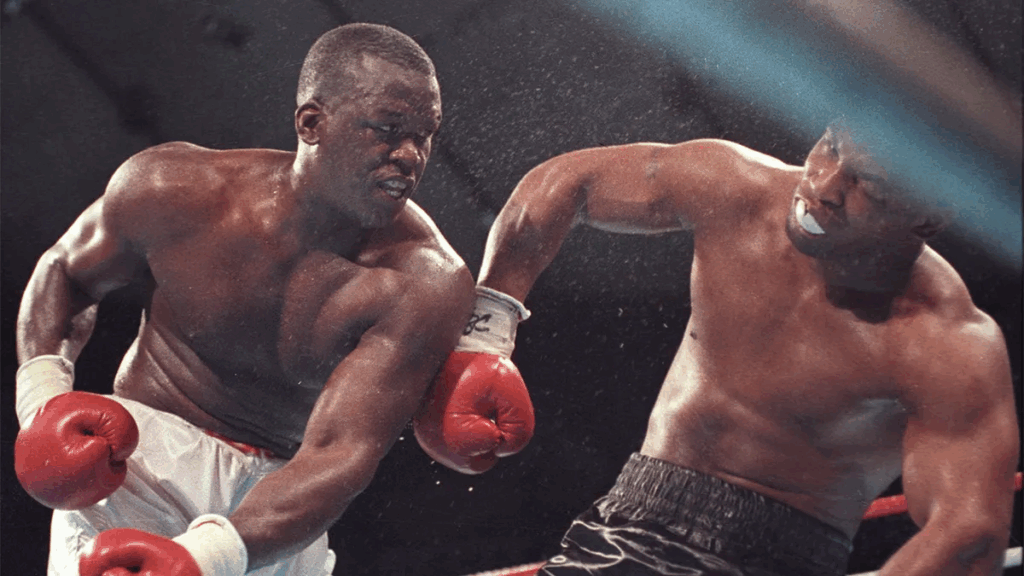
Though Tyson knocked Douglas down in the eighth round, Douglas recovered and came back stronger. In the tenth round, he delivered a blistering uppercut followed by a brutal four-punch combination that sent Tyson crashing to the canvas. For the first time in his career, Tyson failed to beat the count. The world was shocked. The champion was dethroned—by a man most had dismissed as a tune-up.
How This Loss Affected Tyson’s Career
The defeat to Buster Douglas was more than a loss—it was a psychological and symbolic blow that changed the course of Tyson’s life and career. It shattered the myth of his invincibility. Fans and analysts had assumed Tyson was untouchable, a force of nature immune to defeat. That illusion was gone.
In the aftermath, Tyson’s career began to spiral. Though he remained a dangerous fighter, the air of dominance had evaporated. He briefly attempted to regain his titles but never returned to the same elite status he once held. The Douglas fight exposed vulnerabilities—not just physical, but mental and emotional.
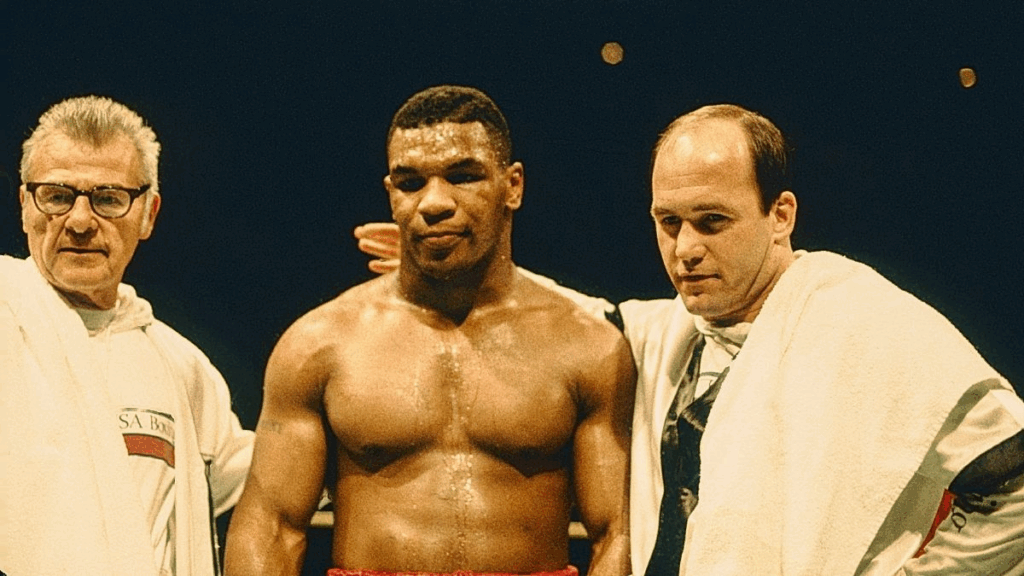
Tyson’s personal life also began to unravel more publicly. He went through a high-profile divorce, struggled with legal issues, and his relationship with his management team deteriorated. He changed trainers, distancing himself from the disciplined team built by Cus D’Amato and Kevin Rooney. The lack of consistent guidance and mentorship deeply impacted his focus and performance.
While Tyson continued to win fights after the loss and even captured additional belts later, the mystique was gone. The defeat to Douglas marked the end of an era—the fall of a seemingly unstoppable champion and the start of a turbulent new chapter filled with more controversy than triumph.
Tyson’s Comeback Fights
When Mike Tyson fell to Buster Douglas and his trial led to his imprisonment, he had a long, tough road to redemption in the boxing community. When he emerged from prison in 1995, there were doubts whether the former heavyweight king could ever reach his peak again. But Tyson’s comeback fights also rekindled interest worldwide and served as a reminder for fans of his devastating power—though not without mixed results and controversy never far away.
Return to Boxing in the Late 1990s
Tyson’s highly anticipated return took place on August 19, 1995, against Peter McNeeley. The bout was a media spectacle and one of the most watched fights of the decade. Tyson won in just 89 seconds after McNeeley’s trainer stepped in to stop the fight. The result thrilled fans but also raised questions about the quality of Tyson’s opponents.
He followed up with another quick win over Buster Mathis Jr., before earning a shot at regaining the heavyweight titles. In 1996, Tyson faced Frank Bruno for the WBC title—a belt Bruno held but had never successfully defended. Tyson dominated the fight, securing a third-round TKO and reclaiming the championship.
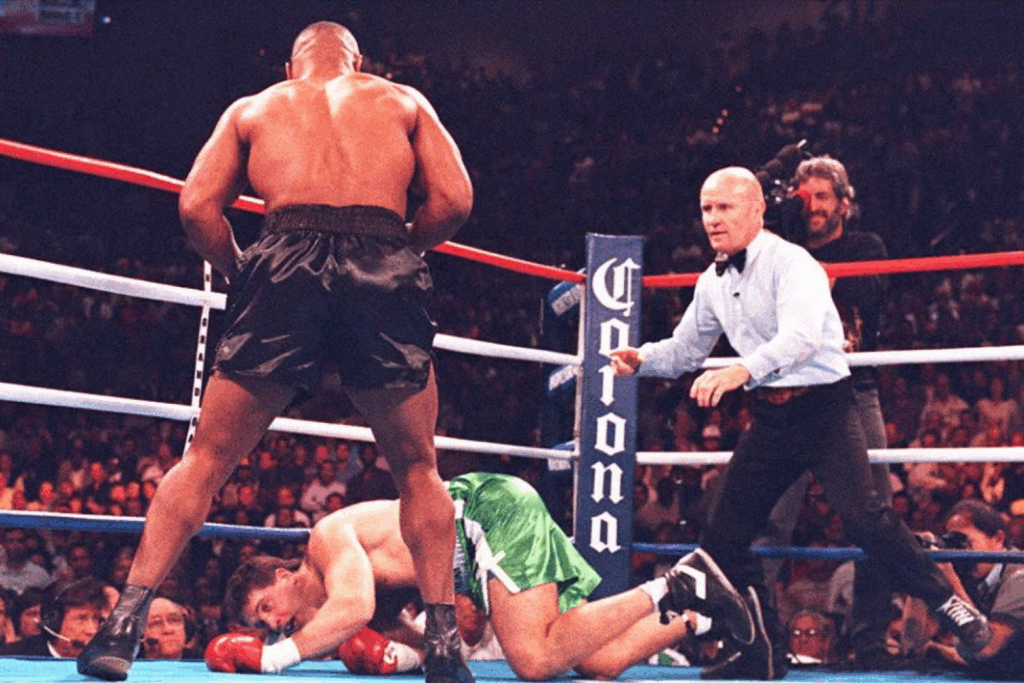
That same year, he defeated Bruce Seldon in the first round to win the WBA title. Once again, Tyson was a world champion, and although his performances lacked the precision of his earlier years, his fearsome reputation and knockout power made him a draw around the globe.
However, his victories during this period came against opponents many viewed as overmatched or past their prime. Critics pointed out that Tyson had yet to face a truly elite heavyweight since his return. That would soon change—with dramatic consequences.
The Evander Holyfield Fights
Tyson’s first real test during his comeback came in November 1996, when he faced Evander Holyfield. Holyfield, a former undisputed cruiserweight and heavyweight champion, had been counted out by many experts due to age and previous health concerns. But what unfolded shocked the boxing world.
In their first bout, Holyfield weathered Tyson’s early aggression and began to outbox and outmaneuver him in the middle rounds. Holyfield used head movement, clinching tactics, and sharp counterpunches to wear Tyson down. In the 11th round, the referee stopped the fight—Holyfield had won by TKO. The loss was Tyson’s first since the Douglas fight and reignited debate about whether he could truly compete at the highest level anymore.
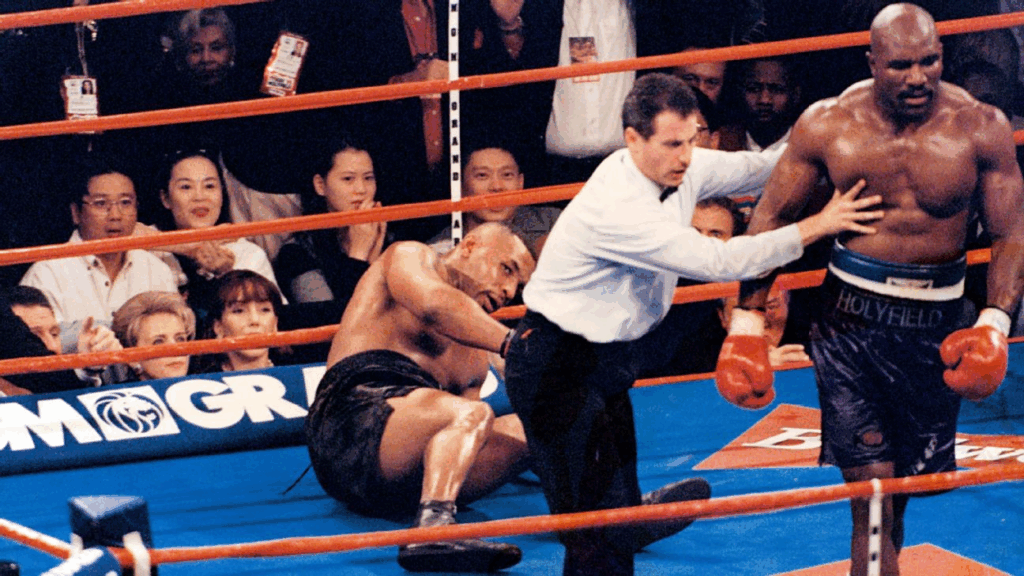
The rematch, held on June 28, 1997, became one of the most infamous fights in sports history. Frustrated by Holyfield’s tactics, which Tyson claimed included repeated headbutts, Tyson bit Holyfield’s ear—not once, but twice. The referee disqualified Tyson in the third round, and the boxing commission later suspended his license and fined him $3 million.
The incident was condemned globally and severely damaged Tyson’s already fragile public image. It also marked a turning point in his career—from a feared warrior to a deeply controversial figure whose behavior had overshadowed his talent.
Despite the fallout, Tyson continued to fight into the early 2000s, but the Holyfield bouts symbolized the last time he faced a true elite opponent in his prime. Those fights showed the world that while Tyson could still generate headlines and ticket sales, his days of true dominance were behind him.
Later Years in the Ring
Mike Tyson had lost his explosiveness by the new millennium, his game changing speed and power that once made him the most ferocious man in boxing drastically waning. While he remained a global icon and a marquee name, Tyson’s final fights presented a fighter struggling with age, fatigue, and the toll of a tumultuous career. The final chapter of his ring career was more about durability and establishment than it was about ruling the ring.
Final Fights and Retirement in 2005
After the chaos of the Holyfield fights and the brief restoration of his license, Tyson continued to box but struggled to regain form. In 2002, he challenged Lennox Lewis for the heavyweight championship in a long-awaited and highly publicized match. Despite the hype, Tyson was clearly outclassed. Lewis controlled the fight with superior technique and reach, ultimately knocking Tyson out in the eighth round. It was a decisive and symbolic loss, signaling that Tyson was no longer among the heavyweight elite.
Tyson’s final professional fights followed a similar trajectory. In 2004, he fought British heavyweight Danny Williams in what was expected to be a straightforward win. Instead, Tyson suffered a fourth-round knockout after injuring his knee mid-fight. Though he showed glimpses of his old power, his stamina and conditioning had visibly declined.

His last professional bout came on June 11, 2005, against Kevin McBride. Tyson started strong but quickly ran out of energy. After the sixth round, he refused to continue, telling his corner he had nothing left. In a post-fight interview, he openly admitted: “I’m not going to disrespect the sport by continuing to fight when I know it’s over.” With that, the former champion announced his retirement from boxing.
Reflections on His Boxing Career
In the years following his retirement, Mike Tyson underwent a dramatic personal transformation. Once known for violence, chaos, and unpredictability, Tyson became increasingly reflective and vulnerable in public appearances. Through interviews, books, and his one-man stage show Mike Tyson: Undisputed Truth, he offered a raw and often painful look at his life—both the triumphs and the many regrets.
Tyson has spoken candidly about the pressure of fame, the emotional weight of childhood trauma, and the deep impact of losing his mentor Cus D’Amato. He has also admitted to being unprepared for the fame and fortune that came with his early success, and how it led him down destructive paths.
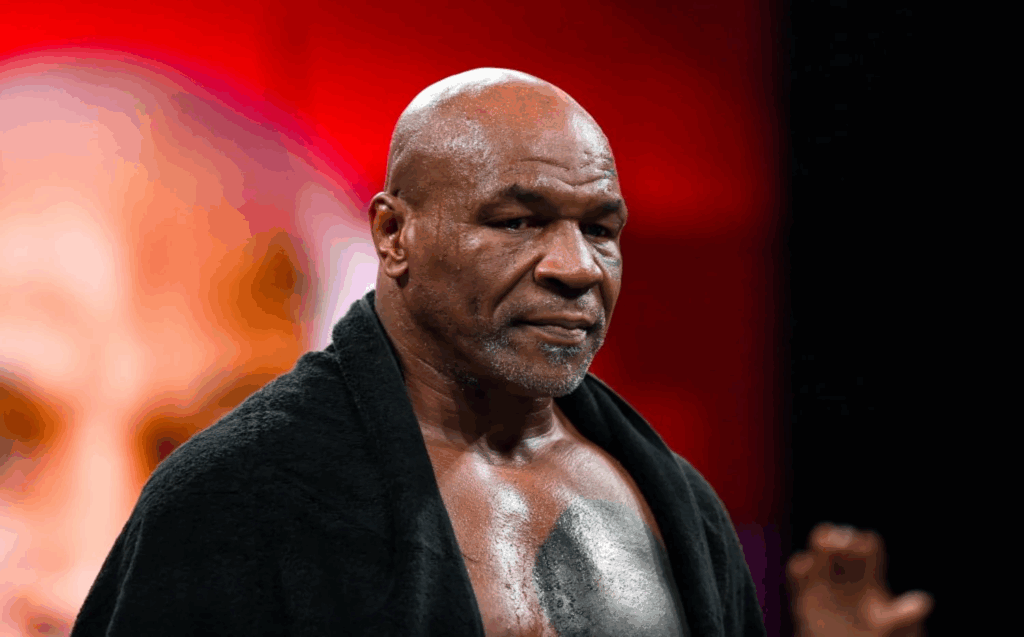
Despite his complex past, Tyson’s contributions to boxing are undeniable. He was the youngest heavyweight champion in history, one of the most feared punchers the sport has ever seen, and a figure who transcended boxing to become a global cultural icon.
Today, Tyson remains involved in media, podcasting, and business ventures, including his successful cannabis company. He is now viewed not just as a former fighter, but as a symbol of redemption and human complexity—a man who once ruled the ring and continues to evolve long after he left it. His boxing career, marked by both brilliance and turbulence, stands as one of the most unforgettable in sports history.